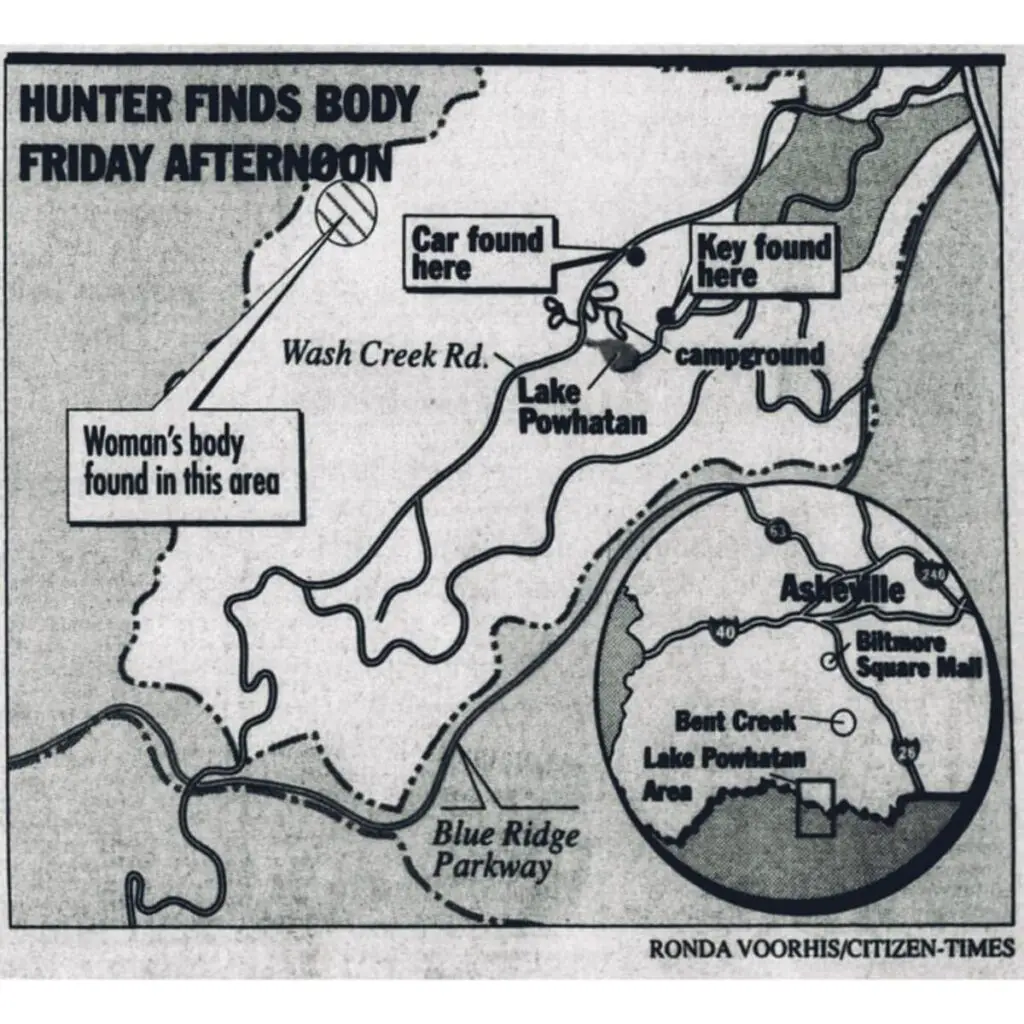
Deaths of incarcerated people spiked in almost every state during the COVID pandemic, hitting people aged 50 or older especially hard. This reporting toolkit contains data and resources about prison mortality at the height of the COVID pandemic, based on this Marshall Project story. The story offers lessons for future pandemics and prison systems that remain in crisis, with strained health care systems along with aging and ailing prison populations.
Every state and facility has its own unique story to uncover regarding how COVID affected incarcerated people and prison staff. The stories offer a window into critical issues like prison staffing, health care, and release policies.
This is where you come in: The Marshall Project analyzed a national dataset compiled by university researchers, and we need your help localizing the data and telling stories for your audience. Because the federal government has not published national data on prison deaths since 2019, the topic needs reporters to uncover what’s happening in your state and local prisons. Whenever a person dies in custody, journalists have an opportunity to ask pointed questions of the criminal justice system and uncover meaningful accountability angles.
Our goal is to jumpstart local criminal justice reporting by saving your newsroom some time and resources on data analysis and story ideation. If you have any questions along the way or would like to brainstorm how to scale this reporting, email Michelle Billman at [email protected] or grab 30 minutes on her calendar. And if you do write a story, please review our Terms of Use, cite The Marshall Project, and link back to us in your reporting.
Don’t forget to sign up for the Investigate This! occasional newsletter to be alerted when new toolkits drop.
Help! I want to do more but have limited resources
This toolkit is meant to be flexible so your newsroom can scale its approach to this story depending on resources and audience needs. You can produce many formats on this topic, from a lengthy local investigation into your state’s prison health care system to a 1-minute newscast story breaking down the COVID death toll in your state.
Another option is republishing the original story as a way to start offering this coverage, and then producing additional localized stories if and when resources allow. If you publish our story, you can add a callout for local sources to see who in your community has been impacted by this issue.
Email Michelle Billman at [email protected] if you would like to:
-
Brainstorm how to start small and expand this coverage over time (producing something is better than nothing)
-
Ask questions about the data, sourcing, or anything else that will help move your story forward
-
Interview a Marshall Project journalist about this data and trends they’ve identified in their research
-
Discuss airing audio related to this story, such as a newscast spot or sound bites
If you produce a local story inspired by this toolkit, please let us know.

Reporting Resources: Context, Angles, Audience, Impact
I want to pitch this story to my editor
Reporting on this topic requires some time and editorial approval. Here is a pitch form you can adapt for your newsroom. We know the pitch process varies widely from newsroom to newsroom and that, oftentimes, a pitch starts with a conversation. Below, we’re providing context, talking points, potential story angles, and important questions to help you prepare for those conversations.
I want to learn why this story matters
As the country continues to recover and learn from the COVID-19 pandemic, examining its public health effects on incarcerated people is essential. People in prison died at more than three times the rate of those on the outside. This was not the first time, and will not be the last, that we see an outbreak of a contagious disease in prisons, so it’s critical to report on which states, and which individual facilities within those states, saw the deadliest outcomes.
For example, during a tuberculosis outbreak in 2021-2022, two Washington state prisons reported 25 cases among incarcerated people. Another roughly 250 incarcerated people in five facilities were diagnosed with latent TB infection without a known history of the disease. Along with infectious diseases, people behind bars are vulnerable to the impacts of climate change, an issue that also requires local journalists to compile and parse mortality data and reports.
Because the federal government has not yet provided an official count of how many incarcerated people died during the COVID outbreak, a patchwork of research groups, including the University of California, Irvine and Brigham and Women’s Hospital, have been documenting the deaths. Their data, and The Marshall Project’s analysis, will help journalists determine what measures led to unnecessary deaths or helped prevent them.
Investigating deaths in prison is a rich and important topic as the prison population ages and the health system is more strained. The longstanding drug war that started in the 1970s led to a generation of incarcerated people who are still locked up. In 2022, state and federal prisons housed 186,000 people aged 55 and older, and in 2021, people in this age bracket made up 15% of the national prison population. Incarcerating the elderly and sick drains prison resources nationwide. Thanks to tough-on-crime sentencing laws, some people are serving lifetime sentences for crimes they committed in their late teens and early twenties. They remain behind bars at significant cost, even though research shows that people age out of crime and “compassionate release” is an underutilized option.
I want an elevator pitch + potential story angles
Here is an elevator pitch for discussing with your editor:
During the height of the COVID pandemic, people in prison died at 3.4 times the rate of the free population, with the oldest hit hardest. Despite the significant loss of life in 2020, prisons remain high-risk settings for the spread of any communicable disease, while their aging populations are becoming more vulnerable to infection.
Here are some potential angles:
-
My [state/region/community] was [above/below] the [national/state] prison mortality trend. We found out why.
-
My state’s prison population experienced a spike in deaths during COVID. Are there public safety decisions or actions that left people in prison more vulnerable to catching COVID? If so, are those policies still in place today? Are there other types of deaths, in addition to COVID, that also increased as a result of the pandemic?
-
My state’s prisons saw their death rates remain steady or improve during COVID. What factors contributed to the preservation of life behind bars? What strategic approaches could be replicated in other communities?
-
In 2020, [X many/X percent of] people were released from prisons in my [state] to prevent the spread of COVID. That number is an [increase/decrease] from years prior and has [increased/decreased] since 2020.
-
[X percentage] of the incarcerated people in my [state prison system/local prison facility] who died from COVID were age 55 or older. What overall percentage of my [state prison system/local prison facility] is 55+ and is that percentage [increasing/decreasing] year-over-year?
I want questions to jumpstart my reporting
Most of these reporting questions should be directed at your state agency in charge of administering prisons, the facilities themselves, lawmakers, and people affected by the system. You may need to do further research, interviews, or records requests to answer them.
-
In your state, who was in charge of keeping people in prison safe during the COVID-19 pandemic? What agencies and administrative roles were supposed to play a part in preventing the spread of disease?
-
What did elected officials and administrators say they would do to keep prisons safe, and what did they actually do?
-
Were there reasons, such as specific laws or policies, which prevented the people in charge from deploying safety measures during COVID?
-
Who has the authority, in your state, to release people from prison, and what does that process entail? How was that authority used (or not used) during the height of the pandemic?
-
How does parole work in your state? Is there a truth-in-sentencing law? These laws aim to ensure that people convicted of crimes serve most or all of their original sentences. (Here’s an example of a truth-in-sentencing law enacted in Arkansas in 2023 and here’s historical context on the origins of these kinds of policies.)
-
Did any of your state prisons go into lockdown during the pandemic? For how long? What operations and services end when a prison goes on lockdown?
-
What are the ripple effects of prison lockdowns on the mental and physical health of the people living and working inside those facilities?
-
If your state did see a spike in deaths, how are officials working to improve the situation now and in the future?
-
If a prison became a hotbed for COVID, how did that affect people in the community, beyond the prison walls? (This would be a good question for public health officials.)
-
Did COVID deaths shed new light on prison health care systems in your state, and are any changes or actions underway as a response?
I want state-specific story ideas to explore
-
There were particularly acute death spikes in several states, where at least 50 more people died in prison in 2020 than in the previous year, and the prison death rate increased by more than half. They include: Arkansas, Michigan, Illinois, Ohio, Georgia, South Carolina, Tennessee, and Texas.
-
Iowa sped up parole board meetings to get more people out of prison. How did they pull that off, and what were the outcomes to public health and public safety?
-
Minnesota granted 158 medical releases after temporarily expanding its program to those at risk for “bad outcomes” from the disease. What health outcomes were seen in their prisons throughout the pandemic?
-
Maryland, South Dakota, and New Hampshire did not see a jump in prison deaths. Did they do anything to prevent the spread of COVID? (Their numbers may be coincidental, or perhaps they used a tactic that could be repeated in future health care emergencies.)
-
Vermont was the only state that reported zero COVID deaths in its prisons, but state officials say they are still seeing ripple effects from prison lockdowns during the pandemic. What are those impacts today for people in prison, their loved ones, and correctional officers?
-
Researchers were not able to obtain data from Arizona about how many people in prison died from COVID. Why not? It could be as simple as not having the resources to respond to the survey, but it’s worth asking.

Work with the Data: Methodology + downloads
Work with the Data: Methodology + downloads
The job of documenting deaths in custody has fallen to a patchwork of research groups and reporters because the federal government stopped publishing data on deaths behind bars. In one of these studies, a years-long collaboration between the University of California, Irvine and Brigham and Women’s Hospital, researchers requested annual counts of deaths in state prisons, overall and by age of decedent, from departments of correction in every state.
They posted the data for public use, and The Marshall Project collaborated with them to analyze this data and share the results for download.
Download the data here, along with data documentation and caveats we discovered while reporting.

Embed Our Graphics: Charts by state
Here is code that can be copied and pasted in most web content management systems to display the trend in deaths in each state’s prisons and how it compares to the national average from 2014 to 2020.

Plug + Play Assets: Illustration + Reporter Interviews
Use this original illustration
You are welcome to republish the provided illustration within any stories derived from the materials in this toolkit, along with any related social media and newsletter promotion of those stories. Dion MBD must be credited in all uses. The illustration should not be published in unrelated stories. The illustrations should not be cropped or altered in any way. Please reach out with any questions.

Interview a Marshall Project reporter for a story
Please email us at [email protected] if you would like to schedule an interview with a Marshall Project reporter who can break down the data for your state compared with the national landscape.
Contact us about radio spots
We’re creating voiced newscast spots with sound bites that radio stations can adapt with data relevant to your audience! If you want to explore this option, email us at [email protected].
Republish The Marshall Project’s original story
You are welcome to republish our original story on COVID prison mortality as a way to start offering this coverage, and then produce additional localized stories if and when resources allow. If you publish our story, you can add a callout for local sources to see who in your community has been impacted by this issue.

Sourcing Considerations
These stories are primarily built around state-level death data and information obtained through records requests. But to connect the dots between what the records show and what happened, you’ll want to consult a wide range of sources. Incarcerated people who survived the pandemic in prison can help tell the story of sickness and death. Prison health care workers can help make sense of the facility’s response to the pandemic. Institutional sources such as prison guards, union members, and prison officials can help explain the policy choices that contributed to your state’s death rate. Public reports can offer a window into the official narratives around how many people died and why.
Learn about records requests
-
Expand your scope. Ask your local health department for ALL custodial deaths — not just deaths in prison. Also ask for prison population numbers if you want to estimate death rates. You may want to request deaths in jail and in police custody to show a more complete picture. To help establish a baseline, you’ll want to request these deaths for several years prior to the start of the pandemic, as well as the years after.
-
Request regularly. Requesting deaths in custody every three months can help you quickly spot anomalies. Consider asking the department of corrections in your state to provide a list of everyone who died, in what facility, their age, cause of death, and date of death. You’ll want to keep an eye out for sudden spikes in one facility, or deaths with no stated reason, or even young people dying at high rates. If the facility can’t provide such information — that is a story unto itself.
-
Handling privacy laws. Prisons and jails will sometimes invoke privacy protections in the Health Insurance Portability and Accountability Act (HIPAA) to deny death requests. Prison Policy Initiative, a criminal justice research and advocacy organization, published guidance on how to overcome HIPAA-related challenges to your request.
How to reach institutional sources
-
Contact your local officer’s union. Many states have an official union that represents correctional officers. States without an official union often have an association that advocates for guards. To learn more about the union in your state, you can read industry reporting by Corrections 1 or visit our corrections officer union tag page in The Record.
-
Call the doctor. Often, corrections departments contract with private companies to provide health care in prisons. State employees are more likely to talk — on and off the record. But private employees are often barred from speaking with the press. You may have more luck speaking to people who are no longer employed in a facility. To do this, consider requesting a list of staff departures every 3 months. You can search relevant names on LinkedIn. Over time, you’ll build up a catalog of people who were previously employed in the prisons.
-
Ask the Feds. Many prisons and jails across the country are under federal oversight because of dismal conditions and subpar health care. Consider reaching out to the monitor who is overseeing your state. It is unlikely they will talk on the record, but they will often speak on background or off the record to help point you in the right direction. You can also access their official report via PACER or CourtListener.
-
Request the staff list. Another approach to find prison employees is to officially request the staff list and cold call people. However, waiting on a records request can be time-consuming, and there’s no guarantee people will talk.
-
Use LinkedIn. If you are looking into deaths in a specific prison, look for officers and medical staff on LinkedIn using the prison name. If you find past employees that can be useful, too, as they may have more latitude to give an official interview.
How to reach incarcerated people
There are some important things to consider when interviewing incarcerated people. For starters, people in prison can sometimes face consequences for speaking to the press. Before you reach out to incarcerated sources, read the entries on informed consent, people-first language, and building trust on our resources page.
-
Family first. Family members of the incarcerated can be great sources of information about prison conditions. They can also help you connect directly with their loved ones behind bars. We recommend searching for family member Facebook groups in your state, using specific prison names. Many of these groups are private, but you can friend and message the moderators and let them know what you’re looking for.
-
Consult the lawsuits. Sometimes lawsuits about deaths or medical neglect make their way to court. You can find suits in your state by using PACER and CourtListener to look for people (or their family members) who have sued over this issue. You can also reach out to local civil rights lawyers or advocacy groups and see if they’ll connect you to their clients in prison.
-
Connect with people coming home. People coming home from prison are often able to speak more freely than people behind bars. Consider reaching out to reentry facilities near you to see if staff would connect you to someone who was recently released. Some states publish lists of parolees, which can provide a good starting point for identifying people.
Connect with relevant organizations
Below is a list of national organizations to aid sourcing your stories on excess prison deaths during COVID or otherwise. We’ve included legal and advocacy organizations working to improve health care conditions behind bars, as well as several professional organizations for health care workers in prisons and jails. These organizations can be a great place to start to connect to providers in your state or to get a general sense of some of the issues with health care behind bars.
To find prison health care workers in your state, consider reaching out to the American College of Correctional Physicians or the Academy of Correctional Health Professionals.
If you want to connect with lawyers working on improving prison conditions and access to health care, or learn more about ongoing human rights lawsuits behind bars, contact the ACLU National Prison Project or the Medical Justice Alliance.
Consider reaching out to the National Institute of Corrections to speak with prison staff and administrative officials to learn more about prison policy and training.
For data and research on prisons in your state, you may want to contact the Vera Institute of Justice, or browse the datasets available at the University of Michigan’s National Archive of Criminal Justice Data.

Style and Standards Notes
Here are a few of the thorny issues that could come up during the reporting process, and guidance on how to resolve them. For a more general overview of our styles and standards, please review our resources page.
-
Medical Histories. When a source’s medical history is relevant to the story, you’ll need to confirm or verify any information included in the story. Sources may be able to provide you with their medical records. Or you can confirm the information with someone authorized to share information about an individual’s medical or mental health history. If the story includes important medical details about a deceased person that you obtained from a family member, make sure the family member is authorized to speak on their loved one’s behalf. You will still need to verify their information with a secondary source.
-
Sources with Mental Illness. If a source shares a diagnosis of mental illness or an underlying medical condition, you will want to understand how they know they’re using the correct term. Any diagnoses should be confirmed or verified by a secondary source. Such sources could include law enforcement authorities, medical professionals, family members or others who have knowledge about the diagnosis.
Are there styles and standards issues or questions that you don’t see here? Let us know. You can write to us at [email protected].

Audience + Impact
Who is my potential audience?
When thinking about the potential audience you want to reach, it’s helpful to consider who can actually fix the problems identified in your reporting, such as prosecutors and legislators.
Here’s a list of some targeted groups and why they might be interested in this topic:
-
Incarcerated people who are directly affected by prison health care systems, who lived through the pandemic behind bars, and who may still be grappling with the impact of that traumatic experience on their mental health.
-
Friends and family members who lost a loved one in prison to COVID and who may not have been notified at all regarding the cause of death or may not have received the information in a timely manner. Additionally, family and friends who were unable to visit or communicate (through phone calls or messaging apps) with their loved one during a prison lockdown.
-
Prison staff members who had limited resources to prevent the spread of disease, who witnessed spikes in deaths, and who may still be grappling with the impact of a facility lockdown. The labor unions representing prison guards may also be interested in your reporting.
-
Family members of prison staff who died after possibly contracting COVID at work.
-
Lawmakers on both sides of the aisle who haven’t yet reviewed data on the COVID death toll in their state’s prisons, especially since the data wasn’t easily accessible until researchers stepped in to compile and share it.
-
Researchers, academics, policymakers, faith leaders, and others who agree that states should be tracking deaths that occur when people are in custody, including deaths from COVID.
-
Public health and corrections officials who are looking to learn lessons from what occurred in detention during COVID to prepare for future disease outbreaks.
-
Mental health professionals and other care providers who serve incarcerated people and their families.
I want to learn about potential impact
Tailoring this coverage for your local community will allow your newsroom to play an important civic role with the potential for concrete impact. The death of a person in custody gives journalists the opportunity to probe the criminal justice system with accountability questions that touch many aspects of incarceration, like health care and the aging prison population.
Specifically, state and federal lawmakers may choose to cite your reporting to inform new policies and policy changes. For example, during the height of the pandemic, The Marshall Project and the Associated Press teamed up to offer weekly updates on the number of people in prison who tested positive for COVID. Several lawmakers cited the coverage in letters advocating for the release of people in prison over age 50 or with pre-existing health conditions.
By producing stories about prison mortality, you can speak to a large, bipartisan audience and gauge regional interest in criminal justice reporting more broadly. At the local level, your investigations can also help hold agencies accountable for reporting deaths in state prisons under the Death in Custody Reporting Act.

Share Your Work
Please (please!) share your localized reporting with The Marshall Project
Thank you for using this toolkit to create your own local criminal justice reporting! Please help us track your work and potentially share it in our newsletter by emailing us a link to your reporting.
Credits
REPORTING
Anna Flagg, Jamiles Lartey, Shannon Heffernan
PARTNERSHIP AND ENGAGEMENT ASSOCIATE FOR INVESTIGATE THIS! Michelle Billman
EDITORIAL DIRECTION Ruth Baldwin
DATA EDITING David Eads
ENGAGEMENT EDITING Nicole Lewis
ILLUSTRATION Dion MD
ART DIRECTION Raghuram Vadarevu
STYLE & STANDARDS Ghazala Irshad
VIDEO TUTORIAL Anna Flagg
AUDIO PRODUCTION Shannon Heffernan
DEVELOPMENT Ryan Murphy
AUDIENCE ENGAGEMENT
Ashley Dye, Rachel Kincaid
EDITING
Tom Meagher, Susan Chira
COPY EDITING
Ghazala Irshad, Kelsey Adams



























